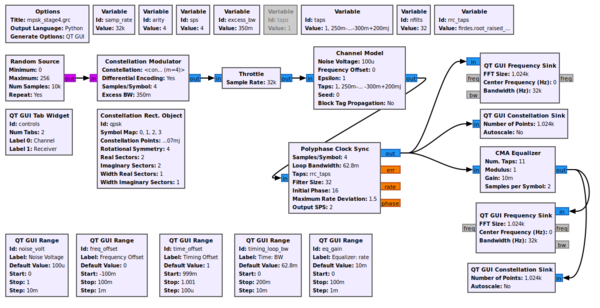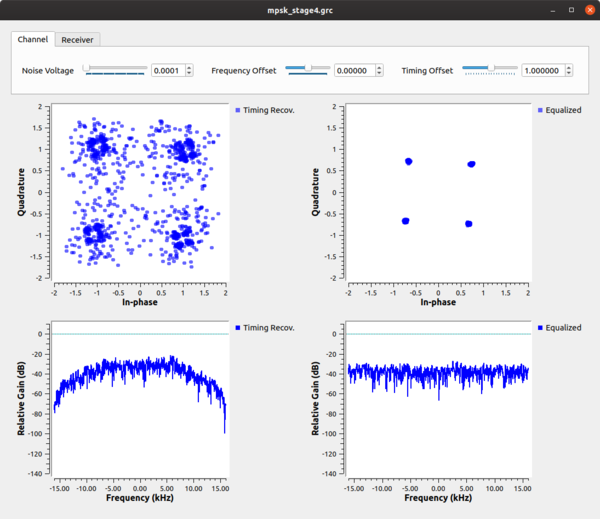CMA Equalizer: Difference between revisions
Jump to navigation
Jump to search
No edit summary |
(add Example Flowgraph) |
||
| Line 20: | Line 20: | ||
== Example Flowgraph == | == Example Flowgraph == | ||
This flowgraph is taken from the [[Guided_Tutorial_PSK_Demodulation]] tutorial. | |||
[[File:stage4_grc.png|600px|]] | |||
[[File:stage4.png|600px|]] | |||
== Source Files == | == Source Files == | ||
Revision as of 13:03, 6 June 2020
(DEPRECATED in 3.9 - Will be removed in a future release) - replaced by Linear_Equalizer and Adaptive_Algorithm
Implements constant modulus adaptive filter on complex stream.
The error value and tap update equations (for p=2) can be found in:
D. Godard, "Self-Recovering Equalization and Carrier Tracking in Two-Dimensional Data Communication Systems", IEEE Transactions on Communications, Vol. 28, No. 11, pp. 1867 - 1875, 1980.
Parameters
(R): Run-time adjustable
- Num. taps
- Number of taps in the equalizer (channel size)
- Modulus (R)
- Modulus of the modulated signals
- Gain (R)
- Gain of the update loop
- Samples per symbol
- Number of samples per symbol of the input signal
Example Flowgraph
This flowgraph is taken from the Guided_Tutorial_PSK_Demodulation tutorial.
Source Files
- C++ files
- TODO
- Header files
- TODO
- Public header files
- TODO
- Block definition
- TODO

